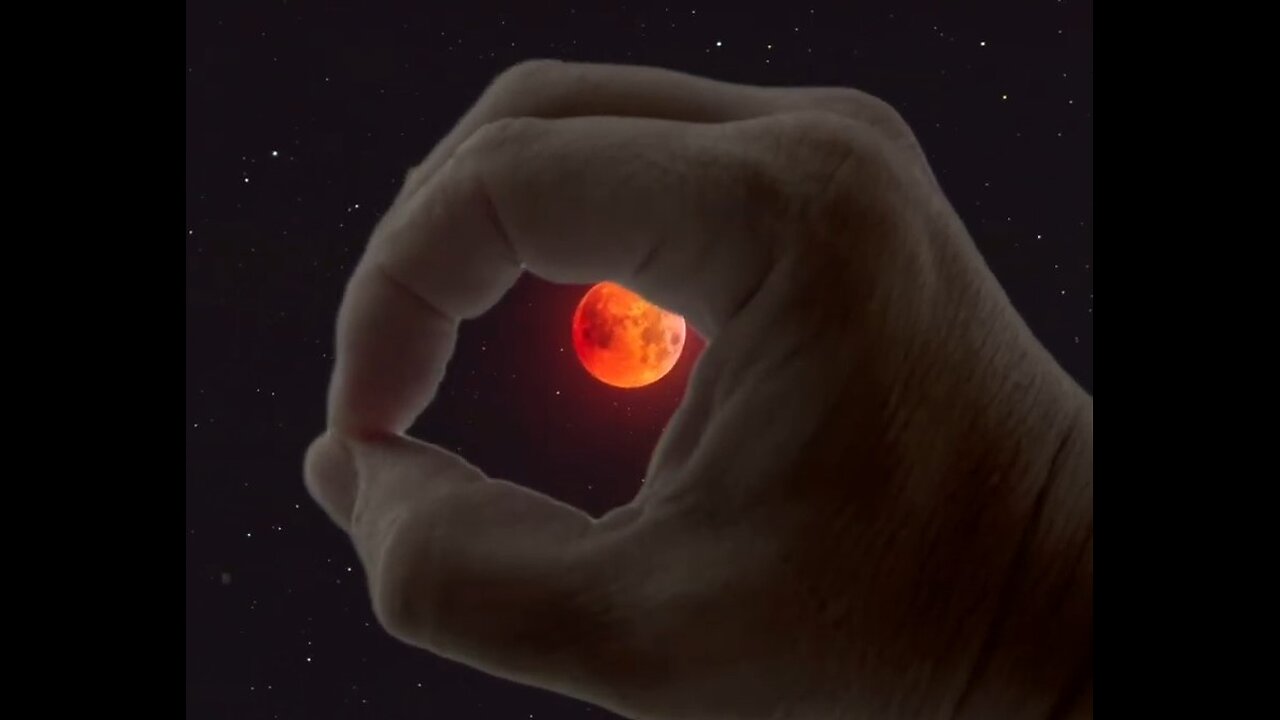Premium Only Content

Deep Dive Decoding the Cosmos: Why Astrological Houses win over Zodiac Signs.
Before we start, like this video, subscribe to the channel so you won’t miss out any of our fabulous content.
During my astro natal chart analysis consultations, I often get asked why I exclusively use the 12 astrological houses for natal chart analysis instead of the traditional zodiac sign wheel. While I normally give a brief and straightforward answer, I’ve decided to provide a detailed explanation in this video so you can understand the reasoning behind it.
The 13 zodiac signs wheel, including Ophiuchus, shift backwards by approximately 30 degrees every 2,160 years. This movement is known to astronomers as the precession of the equinoxes.
The precession of the equinoxes is part of a larger cycle known as the Great Year, which spans for approximately 25,920 solar earth years. The Great Year refers to the time it takes for the Earth's central point projected in space to complete a full orbit through the 13 constellations during the spring equinoxes. Keep in mind that a circle, regardless of size, is divided into 360 degrees.
The signs are simply constellations. Be aware that all celestial bodies appear to have circular orbits, but this is an optical illusion of the two-dimensional plane. In reality, celestial bodies including earth travel in an S-shaped motion, similar to the DNA helix. When we move from a two-dimensional perspective to a three-dimensional space, this S-shaped motion becomes self-evident.
I mentioned earlier that the wheel of zodiac signs shift backwards by approximately 30 degrees every 2,160 years. This backwards motion, known as the precession of the equinoxes, is caused by the gravitational forces of the Sun and Moon acting on the Earth's axis, resulting in a right-to-left motion of the Earth's axis.
It's time to introduce 2 new concepts: the tropical year and the sidereal year.
A solar or synodic year, also known as the tropical year, together with the tilt of the Earth, gives us the four seasons of the year and lasts 365 days.24219 of a solar day, which is the time it takes the Earth’s-equator-line to meet the Sun’s-direct-light at the annual spring equinox around march 21st.
Keep in mind that an Earth solar day covers less than one degree per day in the 360-degree circle; specifically, one day, one solar day equals to 0.9856 of a degree. Therefore, the Earth needs an additional 5 days.24219 of a solar day to complete the illusory 360-degree orbital circle. Also, as a side note, the 365 days.24219 of a solar day tropical year causes the spring equinox-to-be-later-and-later-every-year-in-respect-to-the-sun, thus to keep the spring equinox around march 21st the so-called leap year was established.
The second new term is the "sidereal," deriving from the Latin word star, sidereal refers to distant stars or constellations, not to the Sun or planets. A sidereal year lasts 365 days.2563 of a solar day or 366 days.242 of a sidereal day. This is the time Earth takes to complete its illusory orbital circle relative to the Sun and relative to the nearest, brightest star, with Polaris currently serving as the reference star. Each sidereal day is shorter by about 4 minutes than a solar day, and a sidereal year in sidereal days terms is about 1 day longer than a solar year in solar days terms. Popular media misleading statements want to confuse us, when they say that a sidereal year is about 20 minutes longer than a solar year, that refers to the difference between the solar year and the sidereal year but in solar day terms exclusively, otherwise the difference would be about a day, with this latter clarification included, the difference between the solar year and the sidereal year is in fact about 20 minutes and can be simpler to understand, this is the calculation you should do, to understand the popular media misleading statement
Mainly the sidereal year helps us keep track of where we are really among the celestial mechanics, this is highly needed because some of our planetary brothers and sisters report sometimes pretty quirky motions.
Be aware that the Earth does not actually rotate around the Sun 365days.24219 of a solar day times or 365.2563 of a solar day times around Polaris. Both Polaris and the Sun are too far away and they are too large; Polaris is 50 times larger than the Sun, and the Sun is 1.3 million times larger than the Earth. Instead, the Earth makes circular movements while looking at the Sun and while looking at Polaris. This motion takes 365days.24219 solar days for the solar year and 365days.2563 solar days terms for the sidereal year. This illusory circle is similar to what you do when you make circles with your head while looking at the Sun or any other star. You might say your head is going around the Sun, but that is inaccurate, it is just an optical illusion you are just moving your head making a circle while looking at the sun. Now, the difference between the solar year and the sidereal year in solar day terms is about 20 minutes per year less as earlier explained, when we accrued this yearly difference in the span of 2,160 earth solar years it will total about a 30-degree retracement. This is the calculation you should to do to understand the 30-degree reversal motion:
2,160 years by 20 minutes per year = 43,200 minutes / 60 minutes comprise in an hour = 720 hours / 24 hours a day
= 30 days - about 30 degrees - or in easier terms about a month.
Earth axis is what retraces, and astronomers calculate this reversal motion by extending the earth axis into space and placing an imaginary point in space to track how far or near the earth axis is in respect to one of the 4 brightest stars either Vega, Deneb, Thu-ban and Polaris.
The full 30-degree retracement over 2,160 years shifts, in reversal motion, the alignment of the zodiac signs wheel and this motion is tracked by Earth's projected axis into Polaris yet the noted 30-degree retracement happens around the earth equatorial line to a point in space formed by a 90-degree angle between the projected equinox circle and the extended elliptical plane. When these two intersect at the equinox, the projected point shifts to the previous constellation after 2,160 years. This change is known as the precession of the equinoxes.
Be also aware that the position of the zodiac signs wheel is outdated by over 4,000 years, as it hasn’t been updated since the dawn of the Age of Aries. No one knows precisely when the Age of Aries began in human years, and therefore, the exact start of the Age of Pisces is also unknown. Consequently, the current zodiac wheel is inaccurate for several reasons. Firstly, we lack precise knowledge of when any of the old ages began or ended. Secondly, not all constellations occupy 30 degrees of space. That 30-degree estimation, often spread in popular media, has a large margin of error because some constellations are simply larger than others. Therefore, it takes more time for the Earth's equatorial line to fully per-ambulate a large constellation compared to a smaller one. For example, Virgo is three times larger than Capricorn.
As you can see, using the zodiac signs wheel to determine the influences of a constellation or zodiac sign on a particular birth date is fraught with inaccuracies. Consequently, any such examination will inevitably be inaccurate. Keep in mind that no one, not even astronomers, can state with certainty the exact year when each of the 13 constellations began to be perambulated by the Earth's equinox projected point in space.
The main point here is that the zodiac signs wheel is altered by the precession of the equinoxes, and the dating of the precession of the equinoxes is highly imprecise. Therefore, any natal chart analysis based on the zodiac signs wheel will be inaccurate.
On the other hand, using astrological houses to examine a birth date and birth data, as I do it, provides the most precise analysis possible. The influence of the houses is based on the position of the Sun during a normal 24-hour solar earth day and this method remains accurate regardless of the Earth's axial precession relative to outer space.
This means each house has a two-hour period of influence on Earth, so a 24-hour day is divided among the 12 houses as dictated by the Sun and each house location is fixed. For example, the 12th house begins at 6 am and ends at 8 am every day. The celestial bodies located in that house at the time of a person's birth determine the influences that person receives, and that is final. The Sun acts as the cosmic dial for the astrological houses. With mathematical precision, we can determine the positions of planets and other celestial bodies relative to the Sun. As an astrologer, this allows me to produce a highly accurate 12-house natal chart analysis. From this precise mathematical calculation, the analysis begins, allowing for an examination between all elements in the celestial equation.
By the end of the consultation, the results will be highly precise, revealing which houses the person should focus on to address and release traumas carried over from a past life. It's important to remember that traumas we inflict on ourselves in this lifetime impact not this life but the next.
In conclusion, the 12 astrological houses are based solely on Earth's rotation, which defines the 24-hour day. At any given moment, we can pinpoint the Sun's position with 99.9% accuracy. Earth's 24-hour rotation is governed by the Sun and the Moon, while all other celestial bodies maintain their positions with mathematical precision relative to the Sun. Astrological house examinations of birth data are the analyses of gravitational forces being applied on our DNA at the time, date and location of our birth, and that influence is fixed until the day we die. Celestial bodies have their own personalities, the same applies to the houses and when celestial bodies and the houses meet this relationship has an outcome, and that is the influence exercised on the person’s life. Thank you.
-
 2:26:11
2:26:11
Jewels Jones Live ®
2 days agoWINNING BIGLY | A Political Rendezvous - Ep. 108
125K43 -
 2:04:49
2:04:49
Bare Knuckle Fighting Championship
4 days agoBKFC FIGHT NIGHT MOHEGAN SUN FREE FIGHTS
57.8K7 -
 25:09
25:09
BlackDiamondGunsandGear
8 hours agoYou NEED to be Training For Whats to Come
40.3K11 -
 20:03
20:03
Sideserf Cake Studio
14 hours ago $1.60 earnedA HUNGRY HUNGRY HIPPOS CAKE THAT ACTUALLY WORKS?
39.6K13 -
 23:51
23:51
marcushouse
15 hours ago $1.31 earnedStarship’s Next Move Is Coming Sooner Than You Think!
27.5K6 -
 22:24
22:24
The Finance Hub
21 hours ago $8.78 earnedBREAKING: JOE ROGAN JUST DROPPED A MASSIVE BOMBSHELL!!!
30.4K28 -
 55:02
55:02
PMG
11 hours ago $0.79 earnedHannah Faulkner and Miriam Shaw | Moms on A Mission
21K1 -
 1:21:05
1:21:05
I_Came_With_Fire_Podcast
22 hours ago"Veteran Health, Military Culture, and American Exceptionalism" with Matt Kenney
91.6K21 -
 23:21
23:21
Simply Bitcoin
1 day ago $37.12 earned$1M Bitcoin in 2025? | Trump's Plan to End the Fed Revealed!
181K71 -
 17:19
17:19
SLS - Street League Skateboarding
17 days agoTop Moments from the Men’s Super Crown Final! Nyjah Huston, Giovanni Vianna and Gustavo Ribeiro 👑
100K1